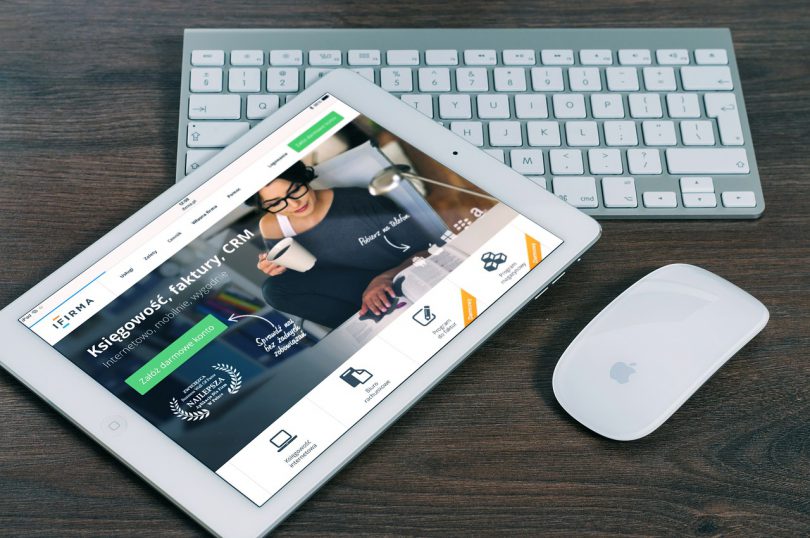Something revolutionary is taking place in the workplace. However, there’s a good chance you aren’t even aware of it. I’m sure you know the expression, “you can’t see the forest through the trees?” Well, for those of us in the communications industry, this may be playing out right before our eyes.
We can no longer ignore the fact that pretty much everyone has an iPhone, iPad, Android, Kindle and maybe even several of them. These devices have become part of our 21st Century culture to the point where we can’t live without them from the moment we wake up until we go to sleep. However, while this is true in our personal lives, it isn’t necessarily the case when it comes to our professional/business lives. Notwithstanding the mobile transformation underway, companies are still relying on the good old (but maybe soon to become obsolete) desktop computer.
For businesses to succeed today, this has to change. Rather than thinking desktop computer first, it needs to become mobile first – from the way content and information is delivered to the way businesses operate. Mobile technology is the driving force behind what is now being referred to as the “Digital Workplace.” However, the significance of what the mobile device represents and the opportunity that exists to do better in our work is being overlooked and even taken for granted by some.
So let’s put it plain and simple. The mobile device is nothing more than . . . a computer. It’s the 21st Century computer. Just as companies had to adapt to a new way of doing business in the late 1980’s (when PC’s, Macs and the Internet became commercialized), so too will they now have to do so again with the mobile computer or risk being left behind competitively.
This presents a great opportunity, particularly for us as communications professionals. To the extent our job requires us to get important information into the hands of our employees, never before have we been able to reach this key constituency instantaneously and regardless of where they are located in the world. Never before has information been accessible on-the-go and workers able to function 24/7 (it’s debatable whether this is a good or bad thing). However, to take advantage of this, certain things have to change to allow the mobile device to be used most effectively and in the ways that companies like Apple and Google intended for them to be used.
In its 2016 Cool Vendor report on the Digital Workplace, leading industry technology analyst group, Gartner, makes the important observation that “[as] consumerization drives more digital dexterity in employees’ lives outside work, it’s becoming more tenable for enterprises to pursue mobile-centric means of communicating with employees.” At its essence, Gartner suggests that mobile technology needs to play an active role in a company’s business operations.
And this makes perfect sense. Mobile technology offers businesses the ability to accomplish a few key things. First, companies can now appeal to the ever-growing Millennial population that comprises a majority of the workforce today and is expected to grow to 50% by the year 2020 according to PwC. This group of individuals grew up with a mobile device within arm’s reach. They are all about instantaneous gratification. Mobile technology also allows companies to cut through the clutter of old school ways of doing business – take for example “push” notifications that allow for the highlighting of a few important pieces of information on the home screen of the device rather than waking up to 100 emails in an inbox.
To succeed in the Digital Workplace, companies need consider the mobile device not just as a tool for making phone calls, answering emails or scheduling calendar appointments. They should be viewed as full blown computers that require software (otherwise known colloquially as “apps”) to be of any true business utility.
Gartner recommends in its report that companies “reassess how their organization enables two-way communications between leaders and subordinate employees. Think beyond traditional portals and email to enterprise messaging platforms and apps that enable a more agile, dynamic, engaging and continuous feedback loop.”
Doesn’t this make sense? Traditional tools like corporate intranets and legacy communications systems just don’t work well in a mobile environment. The user experience is not just difficult, it can be impossible. Similarly, while email is not going away any time soon, the challenges associated with email overload cannot be overstated. Apps (i.e. software) need to be developed specifically for these business functions to ensure an excellent and easy user experience. We all know from experience that where new technologies and solutions are not easy to use, employees won’t use them.
While desktop computers will continue to exist, companies need to imagine a workplace where they don’t. At some point in time in the near future (starting now), the tools and solutions that have been used for decades will no longer properly and effectively work in the small screens of mobile devices. We are in the midst of a technological paradigm change. Since our responsibility as communications professionals is to ensure the delivery of important information to our employees, we have an opportunity to help our companies see the forest through the trees and to succeed in the Digital Workplace.
Jeff Corbin is the CEO and Founder of APPrise Mobile (www.APPrise-mobile.com), the creator of theEMPLOYEEapp for mobile employee communications (www.theEMPLOYEEapp.com). Prior to founding APPrise Mobile, he was the CEO of KCSA Strategic Communications, a public relations and corporate communications consulting firm in New York City.








Do you think this concept of mobility will take a few more years for some of the older generations to adapt to? Or are those older workers going to have to retire in order for mobile technology to fully take over the PR world.
This blog totally hits the nail on the head. Everyone has a smart phone in their hand and although sometimes a distraction, they are a great tool for PR professionals. Mobile devices make it possible to do work at any place and any time. The convenience factor as well as the accessibility and quick flow of information makes mobile devices a necessity in the PR professional world in the society we live in. The older generations my have a hard time to adapt to these changes however. Many rely on the “old fashioned” methods to receive information.
As someone who recently got my first smart phone, I will say it is hard to get used to the quick access and flow of information that is available at my fingertips. But from a PR professional standpoint, the advantages of having a mobile device far outweigh the learning curve. I can do my work much more efficiently and stay on top of the latest news that is crucial to performing at my job.
Paige,
As someone who recently got my first smart phone, I will say it is hard to get used to the quick access and flow of information that is available at my fingertips. But from a PR professional standpoint, the advantages of having a mobile device far outweigh the learning curve. I can do my work much more efficiently and stay on top of the latest news that is crucial to performing at my job.